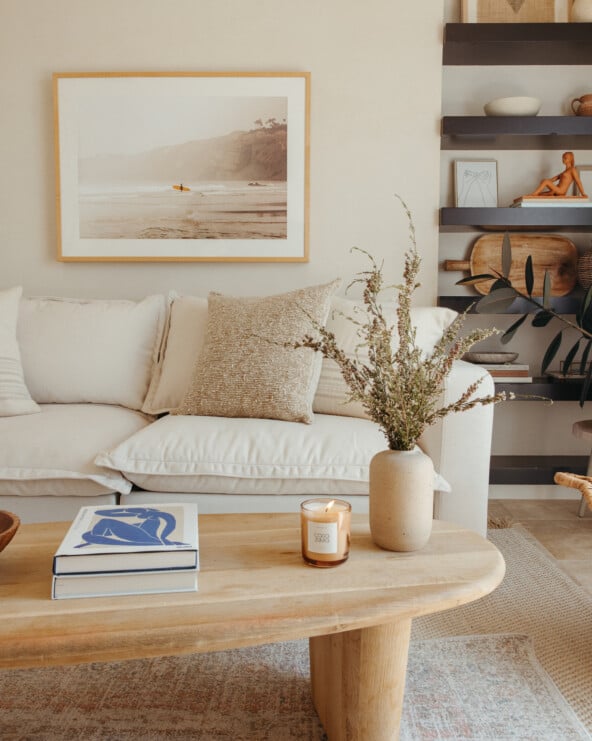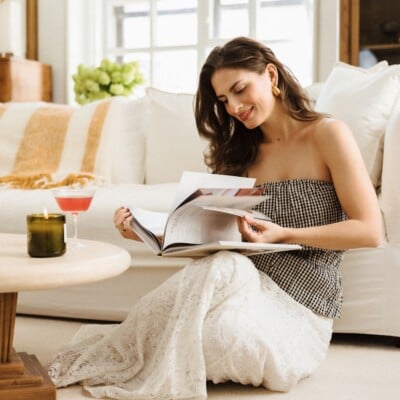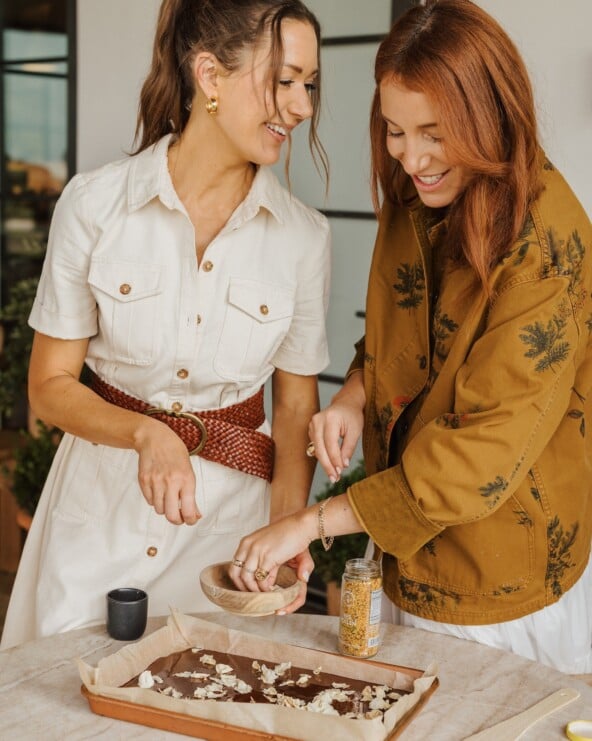There’s a certain calm you feel when you enter a well-designed room. It’s more than just aesthetic—the space encompasses an energy that allows your nervous system to relax. On the flip side, you can enter a room and feel completely unsettled, even if you’re not sure why. This is the power your environment holds: your mood and wellbeing is innately connected to the space you occupy. And one way to be sure your home supports you and your loved ones is through feng shui interior design.

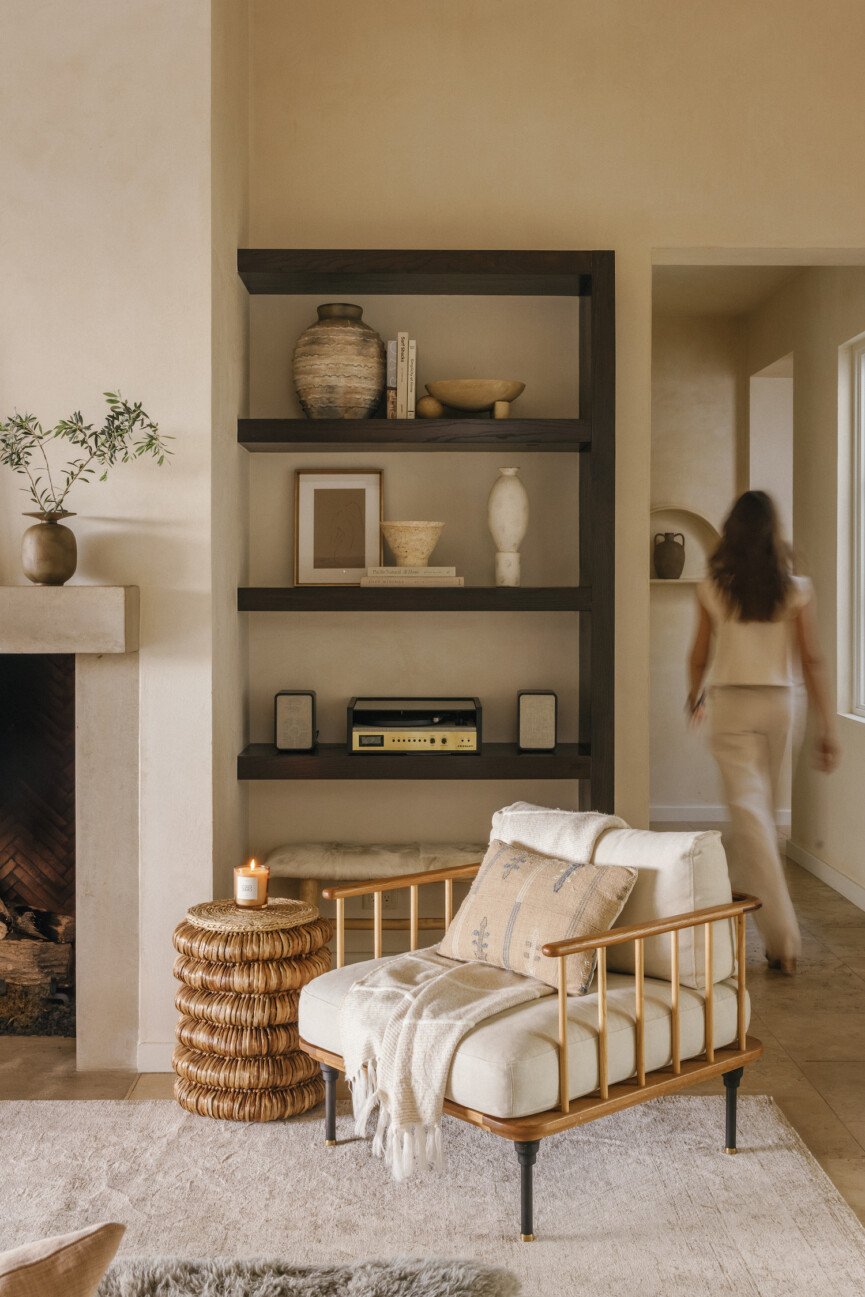
Feng Shui Interior Design: 6 Easy Ways to Balance Your Space
Feng shui interior design is the ancient Chinese art of arranging spaces to promote peace, balance, and harmony. Our homes and work spaces influence our mood and stress levels (even our sleep!). Who wouldn’t want to inhabit a space that inspires more joy? Feng shui isn’t about owning the trendiest pieces or having the most beautiful looking room. It’s so much more about energy.
The good news is that you don’t need to spend lots of money to infuse more peace and harmony into your space. Whether you’re seeking calm, sparking inspiration, or creating deeper connection, your home can set the tone. These simple feng shui interior design principles will help you bring balance and beauty into your space—starting today.
Clear Your Entryway
Your front door sets the tone for how energy enters your home. It is, after all, the first space you step into when you arrive, and it’s also the first space guests see as you welcome them into your home. It’s incredibly important in feng shui, as it’s considered the “mouth of chi” or the main point of entry for energy and positive vibes to flow. Be sure to keep your entryway uncluttered, well-lit, and welcoming. Don’t be afraid to add decor as well like plants or framed photos. Let your entryway set the tone for your entire space!
Reduce Clutter
In feng shui, clutter blocks energy and flow. Piles of stuff are truly a buzz kill in an otherwise tidy space, and excess clutter can cause stress. You probably know the spots that are cluttered in your own home, and if you’d like to add a little more peace and balance, take the time to declutter and organize, especially in high traffic areas. Even tucking away your clutter behind closed doors like a closet or drawer can help you feel lighter and more relaxed.

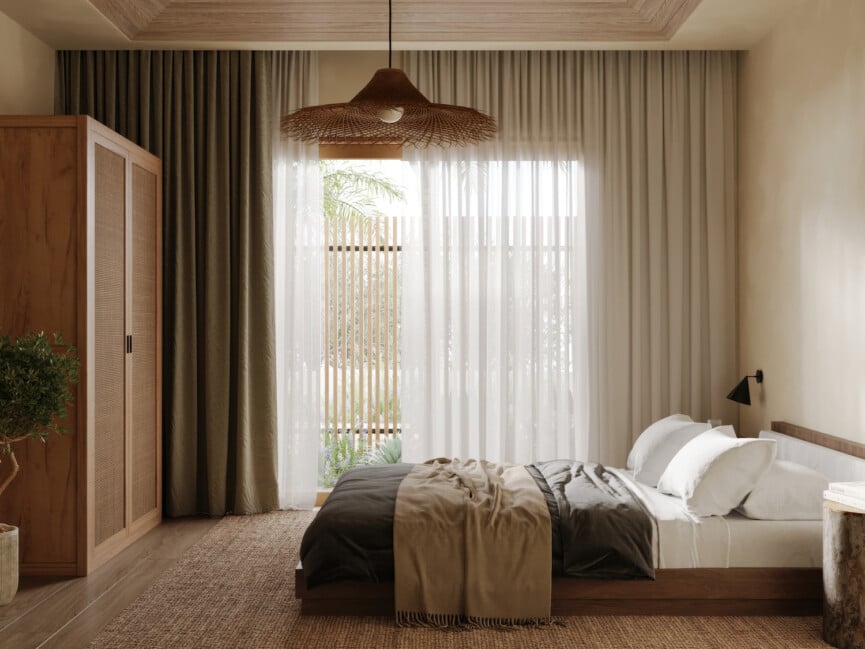
Balance the Five Elements
I took an interior design class over the pandemic, and this is the one design tool that has stuck with me ever since. Feng shui seeks to balance five natural elements—wood, fire, earth, metal, and water—in every space. If each of the elements is present in a room, it will not only look balanced, but it will feel balanced as well. The five elements are:
- Wood: plants, wood furniture, green tones
- Fire: candles, fireplaces, warm colors
- Earth: ceramics, terracotta, sandy hues
- Metal: metal accents, white or gray tones
- Water: fountains, mirrors, deep blues
When these elements are thoughtfully distributed throughout a room, it creates a feeling of harmony and helps prevent a space from feeling flat or unbalanced. The easiest place to try this yourself? Your shelves. Try styling a shelf with all of the elements present. If something feels off, check in to see what element is missing. Have fun!

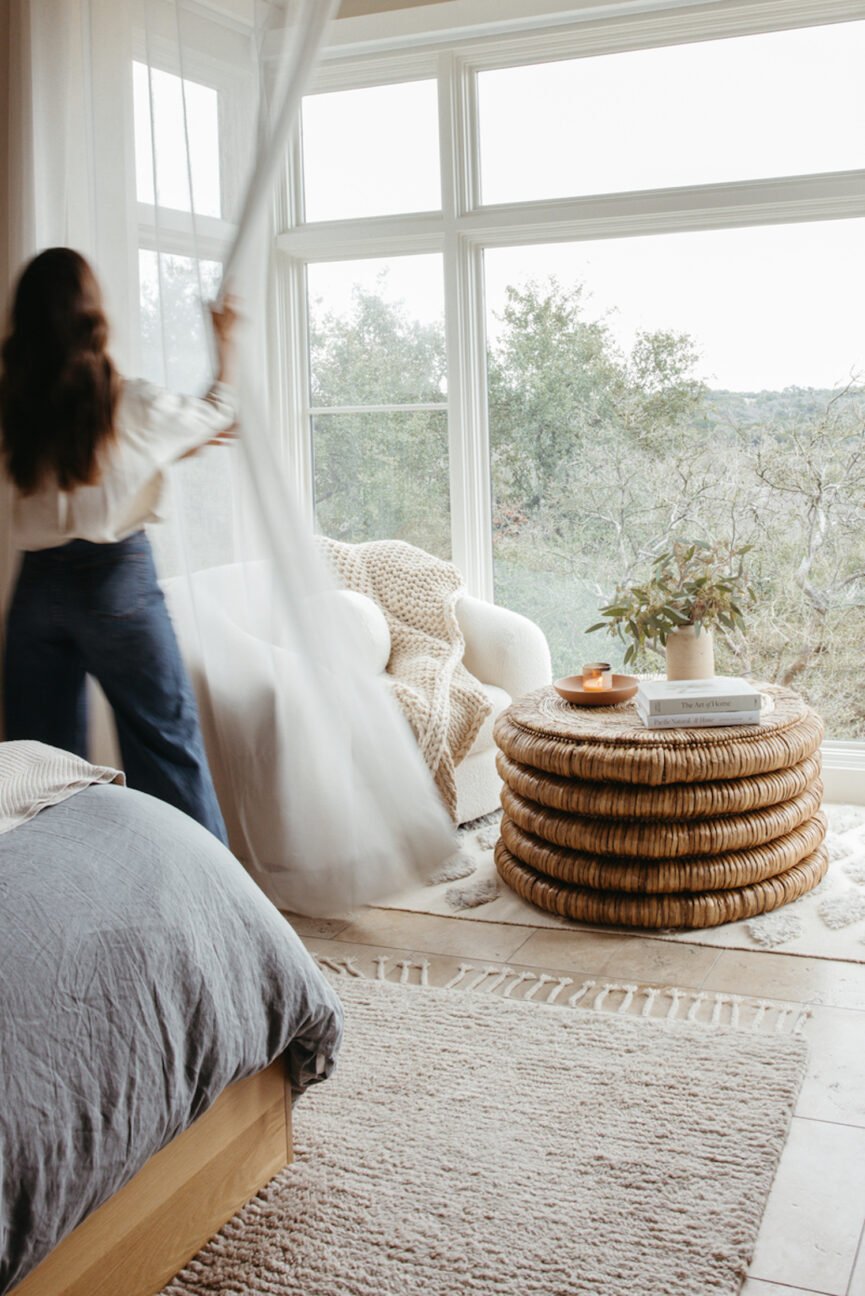
Let Fresh Air and Light In
To allow chi (or energy) to flow freely, feng shui interior design relies on fresh air and sunlight. Open your windows, allow the sun to stream through your windows and add plants to your home as well—they will help purify the air! If your home doesn’t get much natural light, try adding warm bulbs to lamps (avoid a big overhead light) and allow your interior lighting to mimic what’s happening outside. This will help your home stay connected to a natural rhythm.
Place Mirrors Strategically
According to feng shui interior design, mirrors are very powerful. They symbolically double whatever the reflection is, so you want to be sure your mirror is reflecting back something beautiful. Avoid placing a mirror where there’s clutter (the reflection doubles it!) and in front of your bed (the vibes are just weird). Let them reflect something uplifting, like a piece of art or a beautiful view. That way, the good vibes are doubled and will add more positivity to your space.

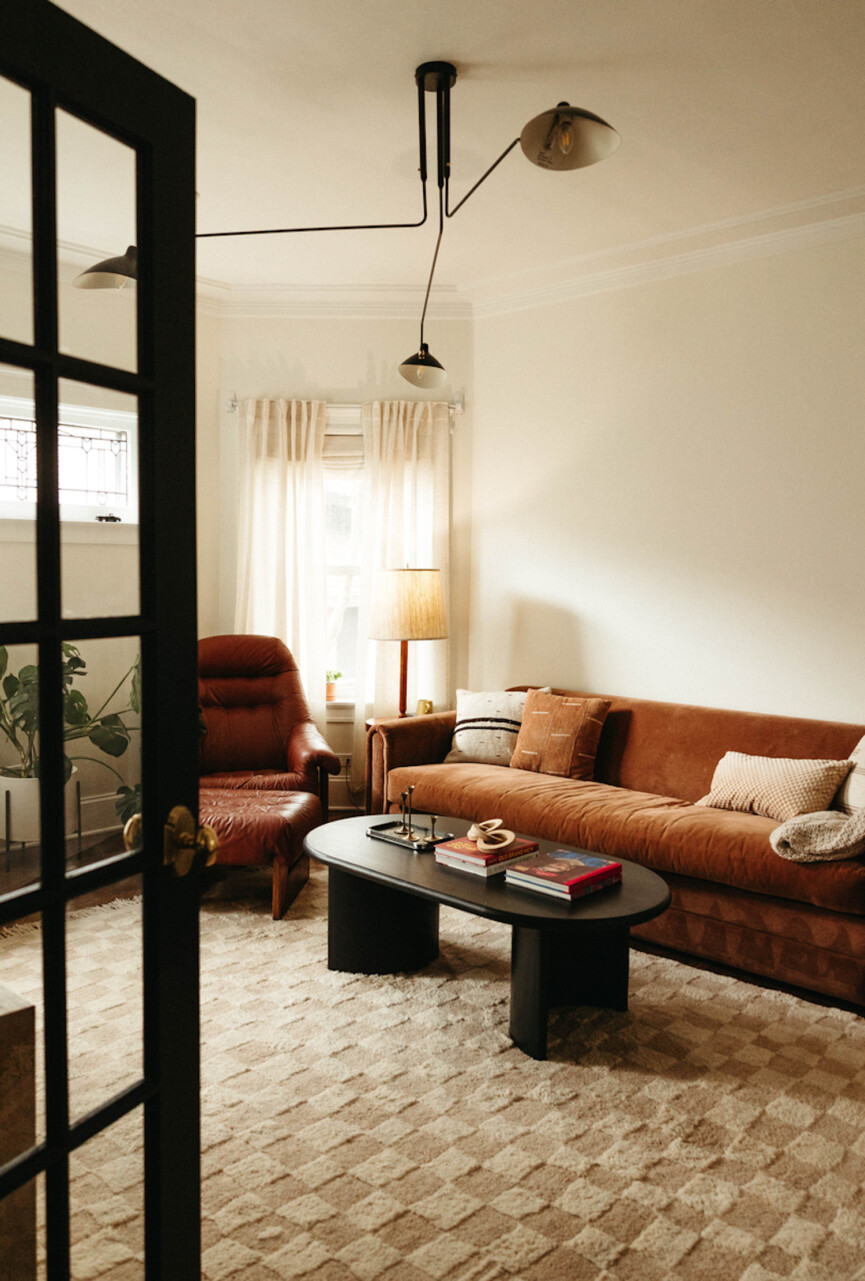
Layout Is Everything
Feng shui interior design is all about flow. You want your rooms to feel easily walkable, no zigzagging or stepping over objects to get to where you want to go. Your space should feel intuitive and easy. This can be tricky in smaller spaces—just be sure you’re using furniture that’s to scale so you don’t feel cramped (this creates tension!).
Where you place your key pieces of furniture—think the sofa in your living room and the bed in your bedroom—is also key.
Feng shui principles to keep in mind:
- Position your bed so you can see the door while lying down, ideally diagonally across the room. In feng shui, having your feet point directly toward the door is considered draining, so avoid putting your bed directly in front of the door. You also want to be sure the headboard is against the wall to create stability and calm—ideal for sleeping, of course.
- Create a view in your living room. Ideally, your sofa should face both the entrance to the living room and something pleasant—a window, fireplace, or piece of art. This balances awareness with enjoyment, the best of both worlds! In feng shui, you never want your back turned toward the entrance of a room; you always want to see who comes and goes.
- If you work from home, place your desk in a place where you can face the door and avoid facing a wall. If you’re able to see the entrance to your space, it signifies you’re ready for new opportunities as they come your way. If you must face a wall, give yourself something nice to look at—a vision board would be perfect!
Feng shui interior design isn’t about rigid rules or chasing trends. It’s about creating a home that supports the way you want to live and feel. When your surroundings feel balanced and intentional, your home becomes more than a place to live, it becomes a partner in your well-being.
This post was last updated on September 15, 2025, to include new insights.

